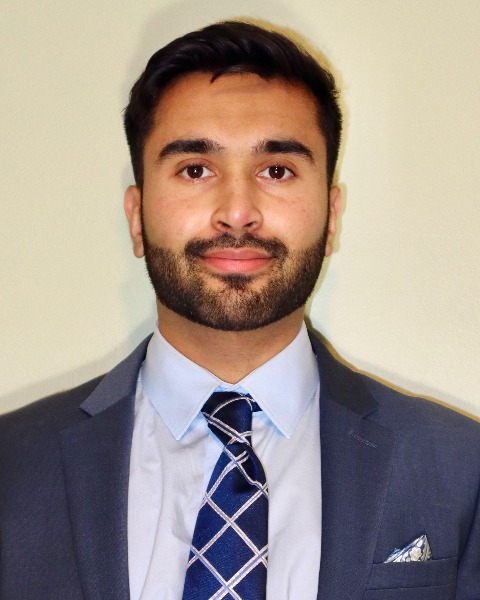Deformity
Evaluating Spinal Sagittal Parameters as Predictors of Pain Reduction in Spinal Cord Stimulator Trials
Friday, February 21, 2025

Sami Shaikh
Student
Drexel University College of Medicine
Pennington, NJ, US
Presenting Author(s)
Introduction: Low back pain is a leading cause of disability worldwide, and spinal cord stimulators (SCS) are often used as an alternative to additional structural surgery. This study aims to evaluate whether pre-trial abnormal spinal sagittal parameters (SSP) correlate with pain reduction during the stimulator trial and after implantation if pursued.
Methods: A retrospective analysis investigated the relationship between SSP and pain reduction among 137 consecutive patients undergoing SCS trials who had scoliosis films. Pain reduction during trial, Pelvic Incidence (PI), Lumbar Lordosis (LL), PI-LL Mismatch (PI-LL), Sagittal Vertical Axis (SVA), and PT were measured. Patients were divided into two groups: Group 1 (trial-only or SCS removed due to poor response, n=51) and Group 2 (long term definitive implantation, n= 86). Correlations between SSP and pain reduction were analyzed via Spearman correlation coefficients, and SSP differences between groups were compared using independent t-tests.
Results: As expected, Group 1 showed statistically less pain relief during SCS trial (44.2% vs 73.6%, p < 0.001). Group 1 had higher mean values for PI (57.7 vs. 55.8), PI-LL (14.8 vs. 13.2), SVA (6.6 vs. 5.4), and PT (22.9 vs. 21.7) compared to Group 2; however, means did not reach statistical significance, with p-values of 0.28, 0.58, 0.20, and 0.47, respectively. Higher PT showed a negative, nearly-significant, association with pain reduction (r = -0.17, p = 0.056).
Conclusion : Patients with more deranged sagittal parameters may be less likely to experience pain relief with SCS trial and implantation. Postural compensation through excessive PT may portend less successful pain control during trial or with implantation. Group 1 showed higher mean values in PI-LL, SVA, PT, suggesting more deranged postural measurements may be associated with a lower likelihood of success with definitive implantation. These findings support the need for ongoing analysis of additional spinal parameters in potential SCS patients.
Methods: A retrospective analysis investigated the relationship between SSP and pain reduction among 137 consecutive patients undergoing SCS trials who had scoliosis films. Pain reduction during trial, Pelvic Incidence (PI), Lumbar Lordosis (LL), PI-LL Mismatch (PI-LL), Sagittal Vertical Axis (SVA), and PT were measured. Patients were divided into two groups: Group 1 (trial-only or SCS removed due to poor response, n=51) and Group 2 (long term definitive implantation, n= 86). Correlations between SSP and pain reduction were analyzed via Spearman correlation coefficients, and SSP differences between groups were compared using independent t-tests.
Results: As expected, Group 1 showed statistically less pain relief during SCS trial (44.2% vs 73.6%, p < 0.001). Group 1 had higher mean values for PI (57.7 vs. 55.8), PI-LL (14.8 vs. 13.2), SVA (6.6 vs. 5.4), and PT (22.9 vs. 21.7) compared to Group 2; however, means did not reach statistical significance, with p-values of 0.28, 0.58, 0.20, and 0.47, respectively. Higher PT showed a negative, nearly-significant, association with pain reduction (r = -0.17, p = 0.056).
Conclusion : Patients with more deranged sagittal parameters may be less likely to experience pain relief with SCS trial and implantation. Postural compensation through excessive PT may portend less successful pain control during trial or with implantation. Group 1 showed higher mean values in PI-LL, SVA, PT, suggesting more deranged postural measurements may be associated with a lower likelihood of success with definitive implantation. These findings support the need for ongoing analysis of additional spinal parameters in potential SCS patients.

.jpg)